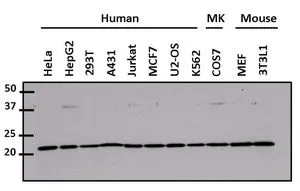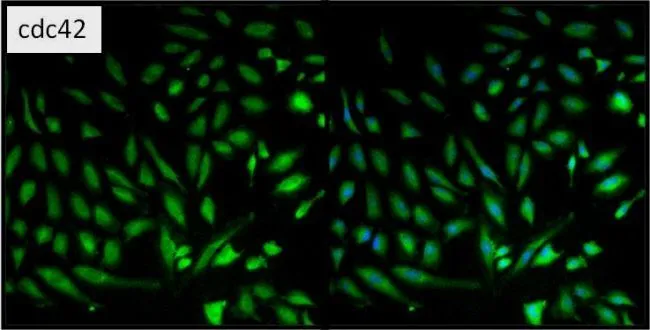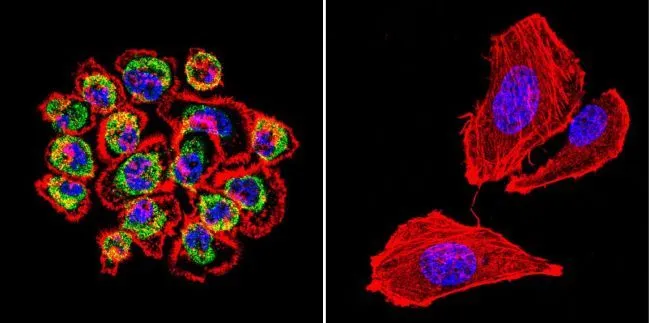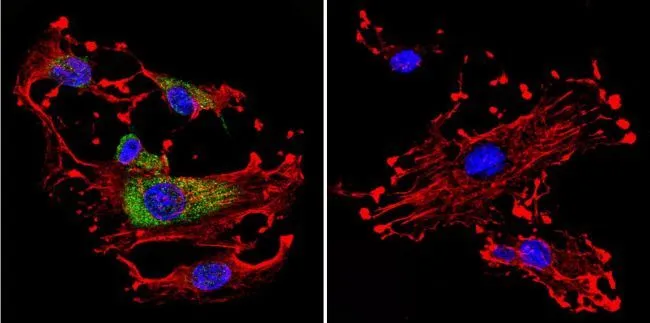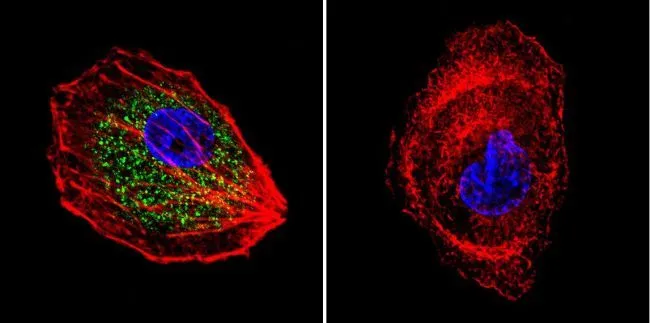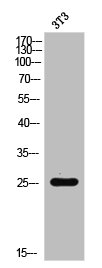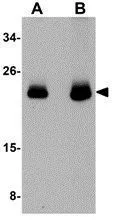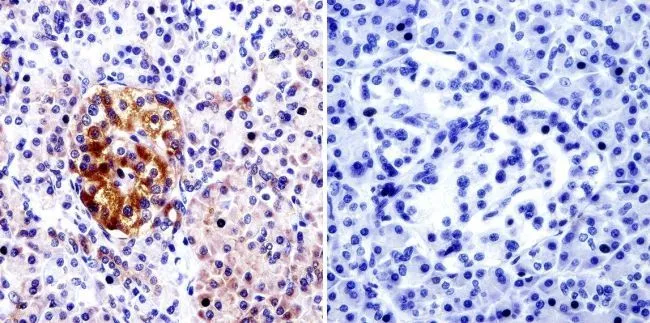
IHC-P analysis of human pancreas tissue using GTX54514 CDC42 antibody. Left : Primary antibody Right : Negative control without primary antibody Antigen retrieval : heat induced antigen retrieval was performed using 10mM sodium citrate (pH6.0) buffer, microwaved for 8-15 minutes Dilution : 1:20
CDC42 antibody
GTX54514
ApplicationsImmunoFluorescence, Western Blot, ImmunoCytoChemistry, ImmunoHistoChemistry, ImmunoHistoChemistry Paraffin
Product group Antibodies
TargetCDC42
Overview
- SupplierGeneTex
- Product NameCDC42 antibody
- Delivery Days Customer9
- Application Supplier NoteWB: 1:1000. ICC/IF: 1:100. IHC-P: 1:20. *Optimal dilutions/concentrations should be determined by the researcher.Not tested in other applications.
- ApplicationsImmunoFluorescence, Western Blot, ImmunoCytoChemistry, ImmunoHistoChemistry, ImmunoHistoChemistry Paraffin
- CertificationResearch Use Only
- ClonalityPolyclonal
- Concentration1 mg/ml
- ConjugateUnconjugated
- Gene ID998
- Target nameCDC42
- Target descriptioncell division cycle 42
- Target synonymsCDC42Hs, G25K, TKS, cell division control protein 42 homolog, G25K GTP-binding protein, GTP binding protein, 25kDa, dJ224A6.1.1 (cell division cycle 42 (GTP-binding protein, 25kD)), dJ224A6.1.2 (cell division cycle 42 (GTP-binding protein, 25kD)), growth-regulating protein, small GTP binding protein CDC42
- HostRabbit
- IsotypeIgG
- Protein IDP60953
- Protein NameCell division control protein 42 homolog
- Scientific DescriptionThe protein encoded by this gene is a small GTPase of the Rho-subfamily, which regulates signaling pathways that control diverse cellular functions including cell morphology, migration, endocytosis and cell cycle progression. This protein is highly similar to Saccharomyces cerevisiae Cdc 42, and is able to complement the yeast cdc42-1 mutant. The product of oncogene Dbl was reported to specifically catalyze the dissociation of GDP from this protein. This protein could regulate actin polymerization through its direct binding to Neural Wiskott-Aldrich syndrome protein (N-WASP), which subsequently activates Arp2/3 complex. Alternative splicing of this gene results in multiple transcript variants. Pseudogenes of this gene have been identified on chromosomes 3, 4, 5, 7, 8 and 20. [provided by RefSeq, Apr 2013]
- Storage Instruction-20°C or -80°C,2°C to 8°C
- UNSPSC12352203

